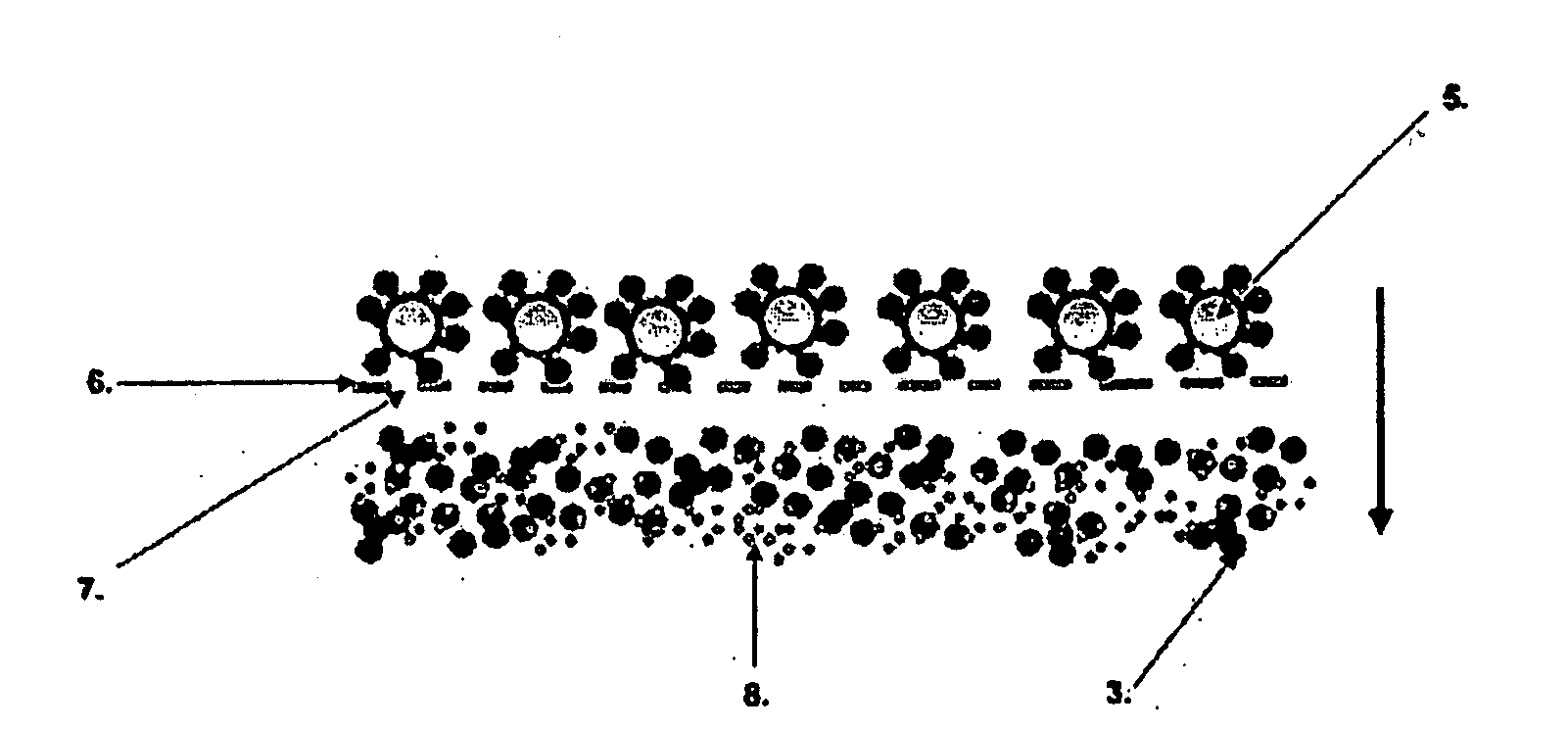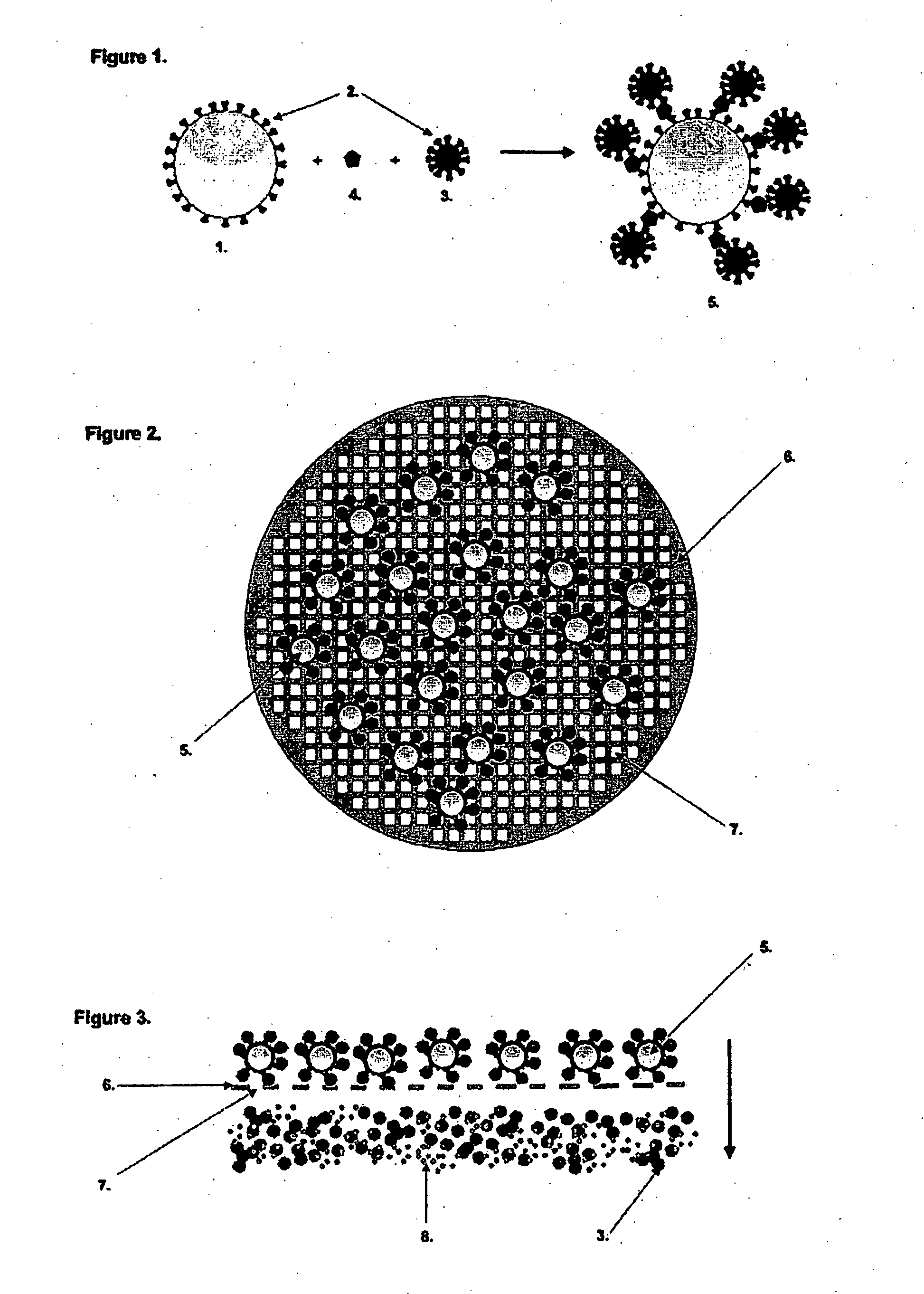Particle Based Binding Assay
a technology of particle binding and assay, applied in the field of particle binding assay, can solve the problems of colouring forming substrates having to be added to the membrane, increasing signal to noise ratio, and more complete separation of unbound materials, etc., and achieves the effect of overcompensating sensitivity deficiencies, high background label count, and small but still optimal amount of ligands or anti-ligands
- Summary
- Abstract
- Description
- Claims
- Application Information
AI Technical Summary
Benefits of technology
Problems solved by technology
Method used
Image
Examples
example 1
[0126]Procedure for sequential assay of hCRP with first and second particle bound binding substance exploiting polyclonal F(ab′)2-fragments and measuring immunocomplex formation on the grid used for separation of said complex (FIG. 4).
[0127]Human C-reactive protein (hCRP) assays are used as an indicator of inflammation. In the present example hCRP was determined in a calibrator sample. First, a sample containing hCRP at a concentration between 0-10 mg / l and 0.1 ml of the buffer (Tris based) are added to small centrifugal tubes. Thereafter, 10 μl of 0.25% latex particles (diameter 10 μm) coated with anti-CRP F(ab′)2 fragment are added and the tubes are incubated for 5 min with mixing. After incubation the tubes are centrifuged for 0.5-3 min (about 16000×g) and the supernatants are discarded. Latex particles with bound CRP are then washed to remove unbound CRP by means of. centrifugation and aspiration. The particles are resuspended to 0.1 ml of buffer and 10 μl of label containing bi...
example 2
[0128]Procedure for sequential assay of hSHBG with first and second particle bound binding substance exploiting monoclonal antibodies and measuring immunocomplex formation on the grid used for separation of said complex (FIG. 5).
[0129]Human sex hormone binding globulin (hSHBG) assays are used as one indicator for hormone status. In the present example recombinant hSHBG was determined in a sample of cell culture medium. First, a sample containing hSHBG at a concentration between 0-200 nmol / l and 0.1 ml of the buffer are added to small centrifugal tubes. Thereafter, 10 μl of 0.25% latex particles (diameter 10 μm) coated with monoclonal anti-SHBG antibody are added and the tubes incubated for 5 min with mixing. After incubation the tubes are centrifuged for 0.5-3 min (about 16000×g) and the supernatants are discarded. Latex particles with bound SHBG are then washed to remove unbound SHBG by means of centrifugation and aspiration. The particles are resuspended to 0.1 ml of buffer and 10...
PUM
| Property | Measurement | Unit |
|---|---|---|
| diameter | aaaaa | aaaaa |
| diameter | aaaaa | aaaaa |
| diameter | aaaaa | aaaaa |
Abstract
Description
Claims
Application Information
 Login to View More
Login to View More - R&D
- Intellectual Property
- Life Sciences
- Materials
- Tech Scout
- Unparalleled Data Quality
- Higher Quality Content
- 60% Fewer Hallucinations
Browse by: Latest US Patents, China's latest patents, Technical Efficacy Thesaurus, Application Domain, Technology Topic, Popular Technical Reports.
© 2025 PatSnap. All rights reserved.Legal|Privacy policy|Modern Slavery Act Transparency Statement|Sitemap|About US| Contact US: help@patsnap.com



